Yucca palm, also known as Joshua tree, is a tree native to the Mojave Desert of America. This tree mainly grows at altitudes from 400 to 1,800 m and is the symbolic tree of this famous desert.
Joshua Tree National Park is an American national park located in southeastern California. It is named after the Joshua tree (Yucca brevifolia) native to the Mojave Desert. Joshua Tree was designated a national park in 1994.
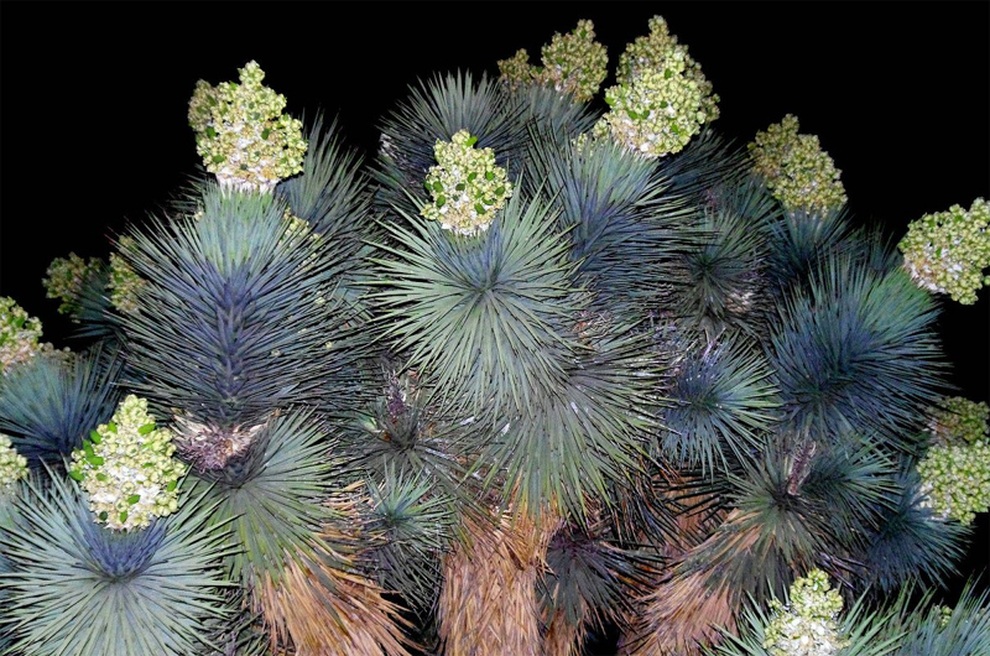
Originating from the desert, the Joshua tree has sharp spines, dark green, straight, bayonet-shaped leaves, 15 – 35 cm long. Joshua trees grow at an average rate of 7.6 cm per year for the first 10 years, then only about 3.8 cm per year. The tree trunk is composed of thousands of tiny fibers and lacks annual growth rings, so determining the tree’s age is difficult.
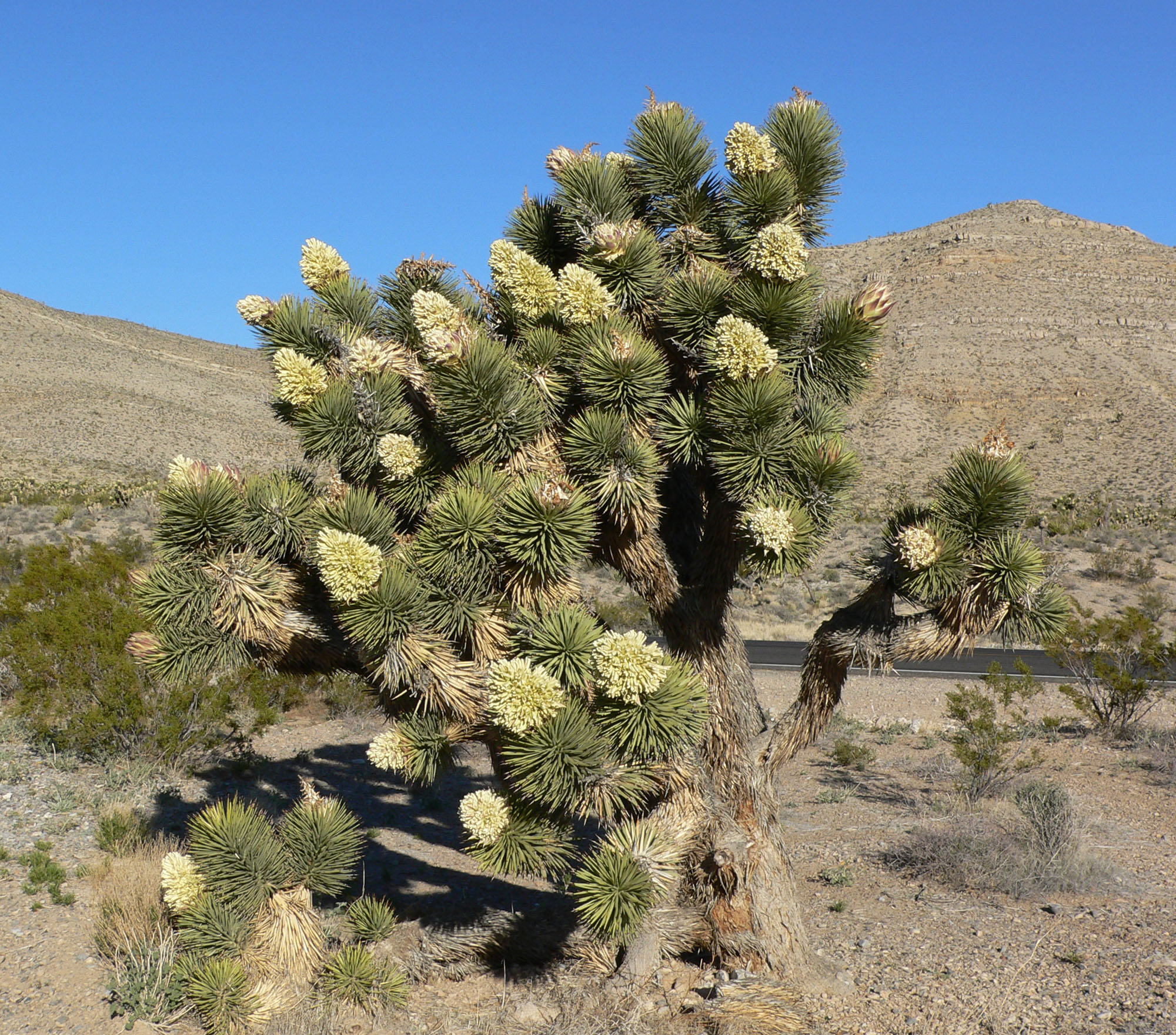
This particular palm tree has a rather heavy branch system at the top and roots up to 11 m long. Even though it lives in the harshness of the desert, it can survive for hundreds of years. The tallest trees are up to 15 m tall. New plants can grow from seeds, but in some populations, new plants grow from underground rhizomes that spread around the parent plant.
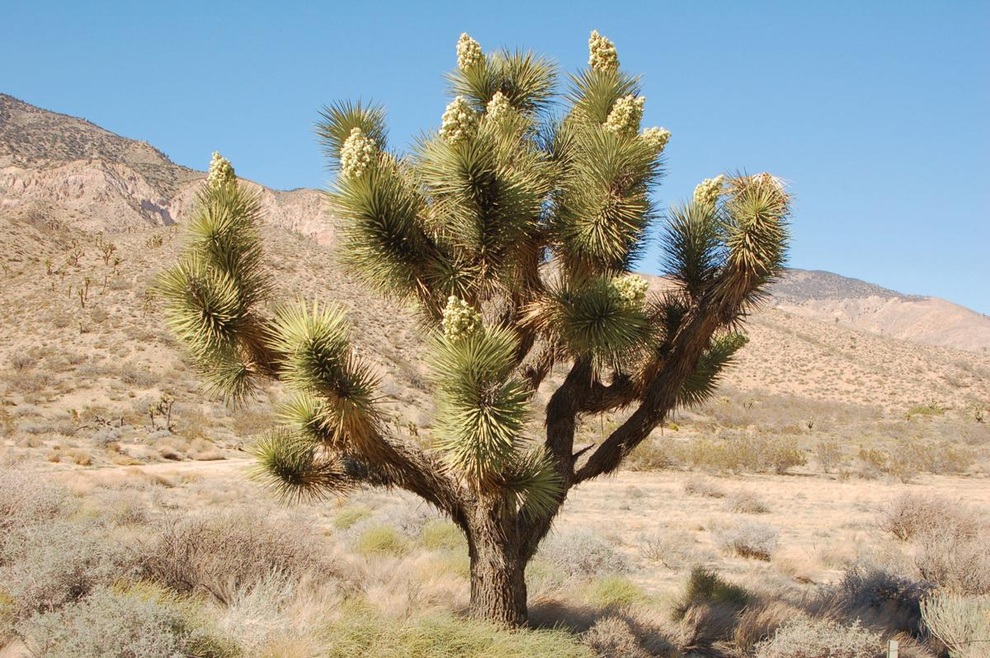
Yucca palm flowers usually appear from February to late April, in clusters 30 – 55 cm long, creamy white to green. The resulting fruit is green-brown in color, elliptical in shape and contains many flat seeds.
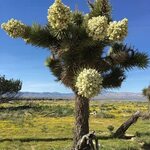
Joshua trees typically do not branch until they bloom, and they do not bloom every year. Like most desert plants, this plant’s blooming depends on rainfall at the right time. Whether the previous winter was warm or cold can also play a role in the Yucca palm tree blooming.
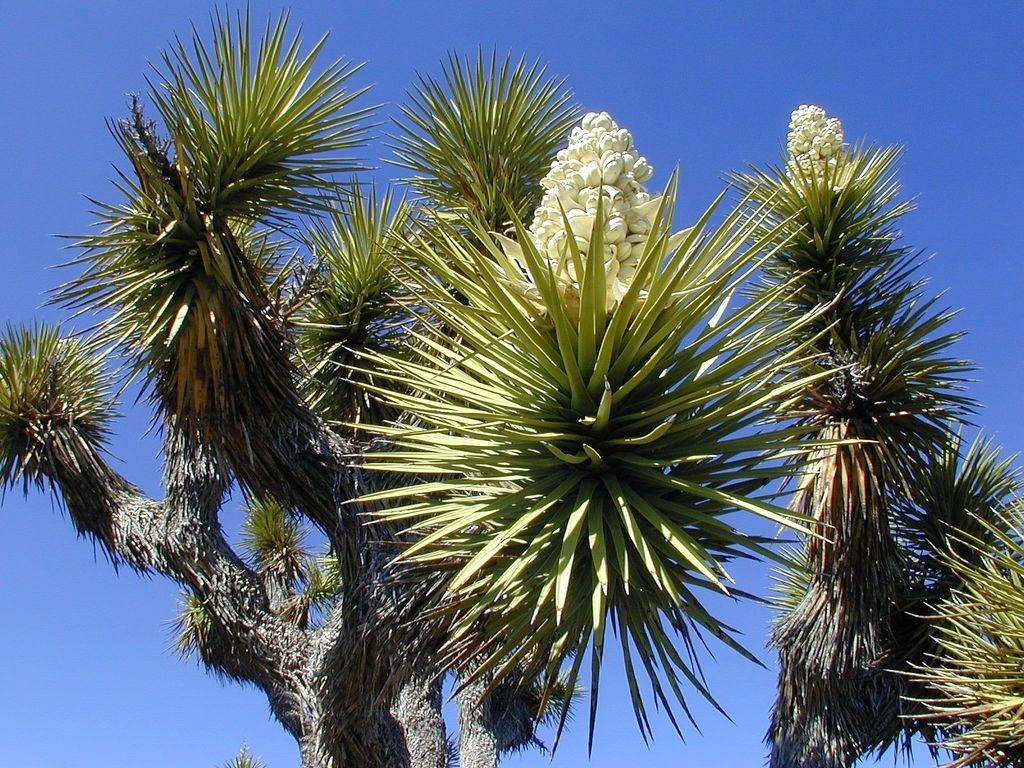
When the flowers bloom, they are pollinated by yucca moths. They spread pollen while laying eggs inside flowers. The larvae eat the seeds, but the plant still has enough seeds to reproduce. The Joshua tree is one of the species predicted to experience range reduction and displacement due to climate change.
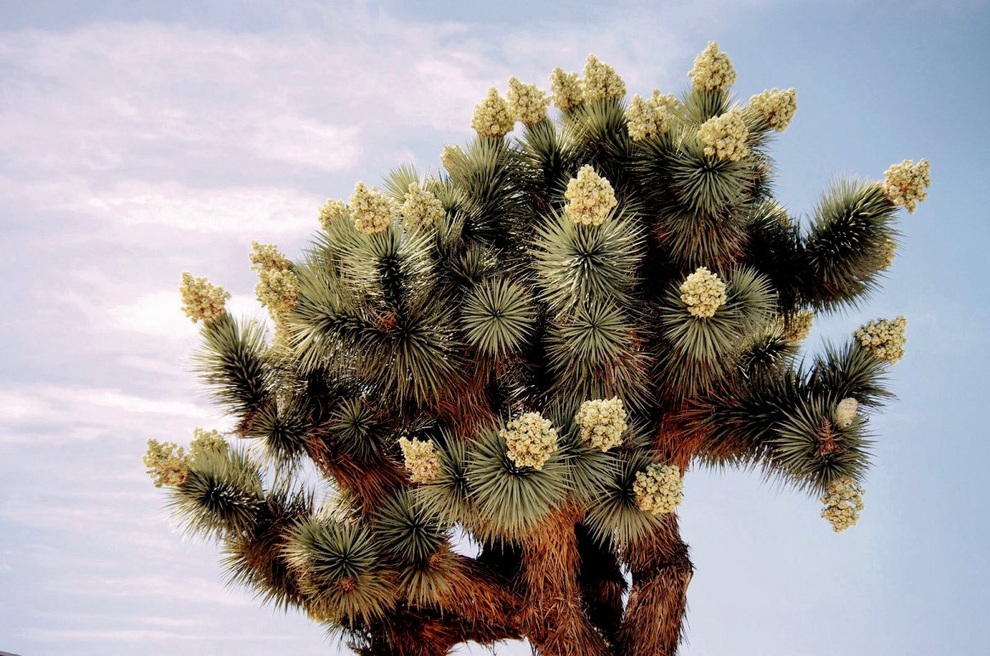
Native Americans, who have lived in the Southwest for generations, considered the Joshua tree a valuable resource. Their ancestors used the leaves of this tree to weave sandals and baskets, used the seeds and flower buds for cooking, and used the red roots to make dye.





